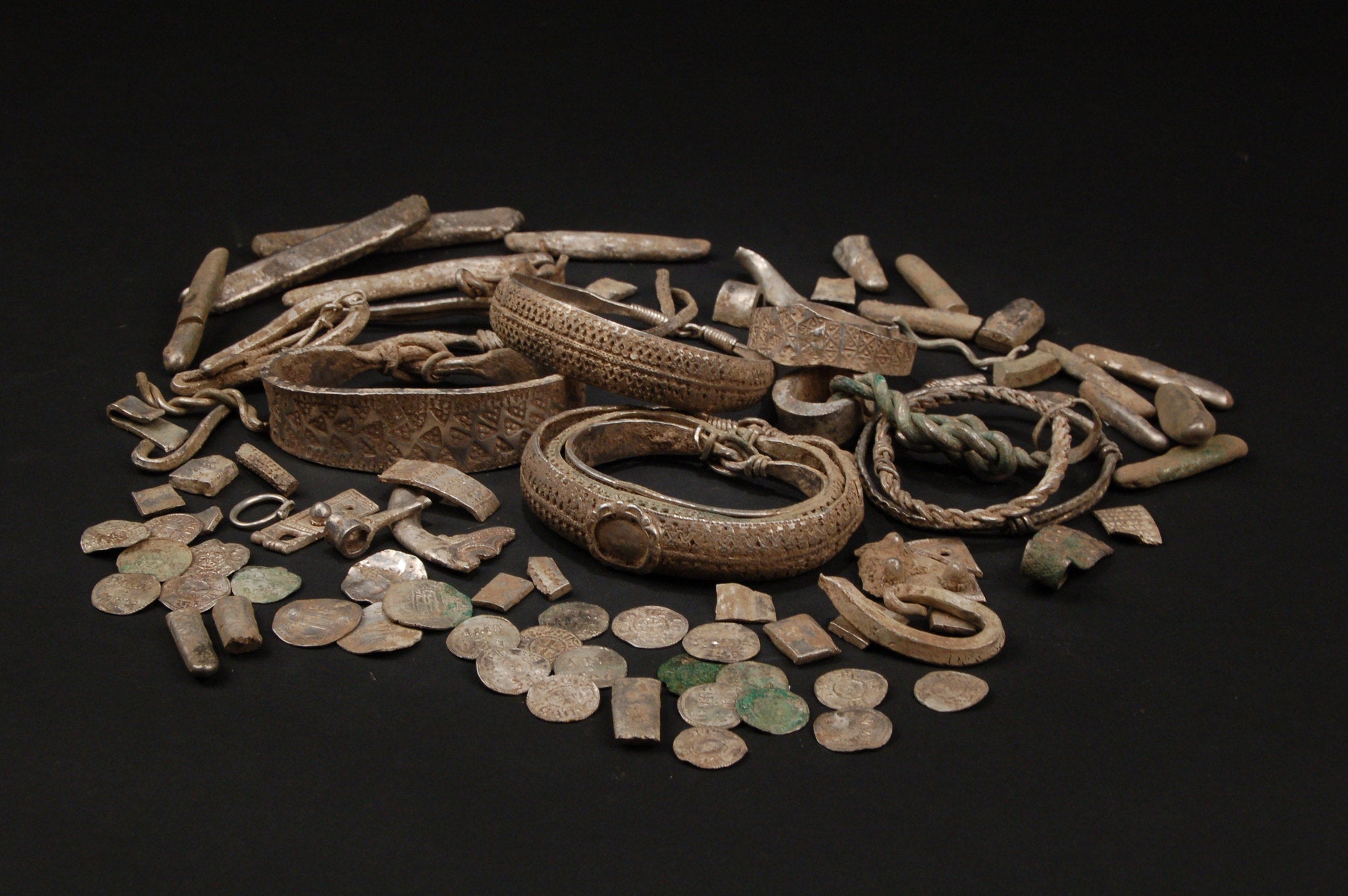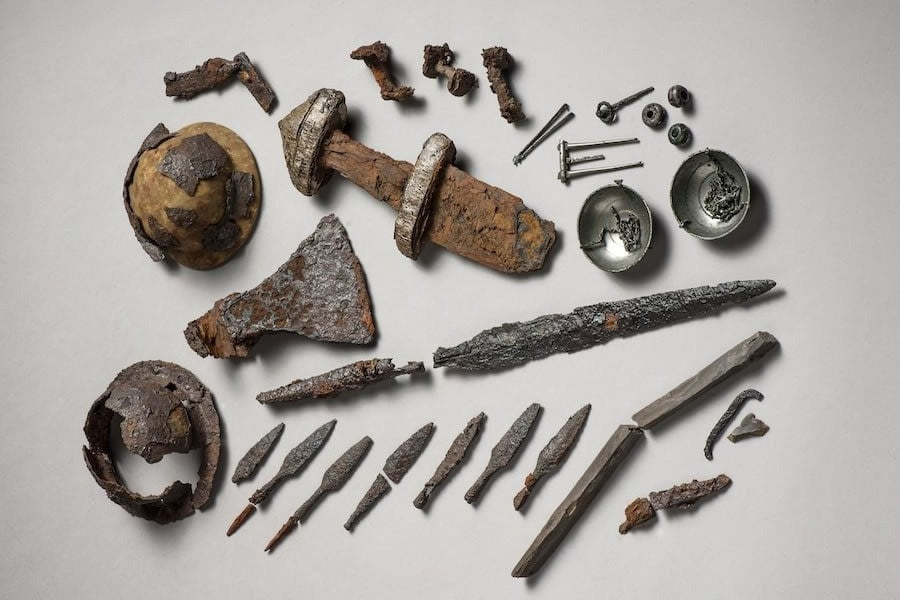
Borremose's Startling Pre-Viking Archaeological Insights
Have you ever wondered about the secrets hidden beneath the earth's surface, waiting to be unearthed and unraveled? The archaeological site of Borremose in Denmark holds some of the most fascinating and well-preserved remains from the Iron Age, offering a captivating glimpse into the lives of our ancient ancestors.
Location and Historical Context

The earth-rampart of the Borremose Fortification by Niko DK. (Public Domain)
The Borremose bog, situated in the Himmerland region of Jutland, Denmark, has yielded several remarkably well-preserved human remains, including the famous Tollund Man and Borremose Woman, dating back to the Pre-Roman and Roman Iron Age (500 BC - 400 AD). The acidic and anaerobic (lacking oxygen) conditions of the Borremose peat bog played a crucial role in preserving these bodies for thousands of years, allowing researchers to study various aspects of Iron Age life, including clothing, hairstyles, and potential ritual practices.
Discovery and Preservation

The Borremose Man, one of several bog bodies, animal sacrifices and votive offerings found in and around Borremose. Photo Credit: National Museum of Denmark (Public Domain)
In 1946, a group of peat cutters stumbled upon a remarkable find – the remarkably well-preserved body of a man, now known as the Tollund Man. This discovery was followed by the unearthing of another body, the Borremose Woman, in 1948. Both bodies were remarkably preserved, with their skin, hair, and even internal organs intact, thanks to the unique conditions of the bog.
The Tollund Man is estimated to have been around 40 years old at the time of his death, standing at approximately 5'3" tall. His body exhibited signs of a violent death, with a noose still tightly knotted around his neck, indicating he was likely hanged or strangled. Despite the passage of time, his facial features and even his final expression were remarkably preserved, giving researchers a haunting glimpse into his final moments.

The Borremose Woman around the time of her discovery. (Public Domain)
The Borremose Woman, believed to be in her late 20s or early 30s, was also found in an exceptional state of preservation. Unlike the Tollund Man, her body did not show signs of violence, leading researchers to speculate that she may have been a ritual sacrifice or a victim of illness. Her delicate features and intricate hairstyle, still intact after centuries, offer a captivating glimpse into the grooming practices of the time.
The Borremose II body, also known as the Borremose Man, was the third remarkably well-preserved body found in the Borremose peat bog during the post-war period, in addition to the famous Tollund Man and Borremose Woman. Like the other bodies, the Borremose Man's preservation was facilitated by the unique environmental conditions of the bog, including acidity, lack of oxygen, and constant moisture, which prevented bacterial decomposition.
Archaeological Significance

The Borremose II body. (Public Domain)
The Borremose bodies offer a rare glimpse into the clothing and hairstyles of Iron Age communities. The remarkably preserved Borremose Woman's intricate hairstyle and garments provide insights into grooming practices and textile production during that era. Examining the bodies has also shed light on the diet and health of Iron Age people. Analysis of the Tollund Man's hair and nails revealed clues about his dietary habits, while the preservation of internal organs allowed researchers to study ancient diseases and medical conditions.
The manner of burial and accompanying grave goods found with the Borremose bodies provide valuable information about Iron Age burial rituals and beliefs surrounding death and the afterlife. The evidence suggests these individuals may have been sacrificial offerings or held significant roles within their communities. Artifacts found alongside the bodies, such as tools, weapons, and jewelry, offer insights into the daily lives, craftsmanship, and material culture of Iron Age societies. These objects shed light on various aspects of their lives, including their skills, trades, and societal structures.
Burial Rituals and Sacrificial Practices

The former road across the artificial moat of the Iron Age Borremose Fortification. (Public Domain)
The Borremose discoveries, particularly the Tollund Man's body with a noose around his neck, have sparked discussions about the potential rituals and practices surrounding sacrifice and execution in Iron Age societies. While the accompanying grave goods suggest he may have held an important role, the manner of his death raises questions about whether he was a sacrificial offering, a revered figure, or perhaps a criminal who faced execution.
Theories regarding ritual sacrifice and communication with deities have been proposed, as the placement of bodies in bogs was a widespread practice during the Iron Age. However, some researchers argue against oversimplifying the interpretations and suggest that factors such as physical abnormalities or societal ostracism could also have played a role in these burials.
The contrasting practices of formal burial and bog burial during the Iron Age period further add to the complexity of understanding the motivations behind these practices. The Tollund Man's case highlights the need for careful examination of evidence and consideration of multiple perspectives when interpreting the significance of these ancient burials.
Ongoing Research and Exploration

Bog body from Denmark, "Borremose Man". (Public Domain)
As technology advances, researchers are continuously exploring new ways to extract even more information from the Borremose discoveries. Modern analytical techniques, such as DNA analysis and isotope studies, have the potential to reveal insights into the genetic makeup, ancestry, and migration patterns of these ancient individuals.
While the Borremose site has already yielded remarkable finds, the possibility of future excavations remains exciting. With each new discovery, archaeologists have the opportunity to piece together a more comprehensive understanding of the rich tapestry of human history and the lives of our ancestors.
Conservation Efforts
Ensuring the preservation of these priceless archaeological treasures is a paramount concern. Efforts are underway to maintain the delicate balance of the bog's environment and protect the remains from further degradation. Advanced conservation techniques and climate-controlled storage facilities play a crucial role in safeguarding these invaluable artifacts for future generations.
Public Outreach and Education
Beyond preservation, there is a concerted effort to share the captivating stories and discoveries from Borremose with the public. Museums and educational institutions around the world have dedicated exhibits and programs to showcase these remarkable finds and foster a deeper appreciation for our shared human heritage.
Conclusion
The archaeological discoveries from Borremose have unlocked a portal to the past, offering a rare and intimate glimpse into the lives of our Iron Age ancestors. From the hauntingly preserved Tollund Man and Borremose Woman to the wealth of insights into daily life, burial rituals, and sacrificial practices, these finds continue to captivate researchers and the public alike. As we unravel the mysteries of Borremose, we not only deepen our understanding of history but also forge a stronger connection with our shared human experience.
Citations
BBC. (2022, September 7). The mystery of the human sacrifices buried in Europe's bogs. BBC Future. www.bbc.com
Dash, M. (2016, September 4). The bodies in the bogs. Mike Dash. https://mikedashhistory.com/2016/09/04/the-bodies-in-the-bogs/
Fandom. (n.d.). Borremose Man - Mummipedia Wiki. Mummipedia. mummipedia.fandom.com//Borremose_Man
Martens, J. (n.d.). Borremose Reconsidered. Jutland Archaeological Society Publications, 41, 159-182. https://tidsskrift.dk
Natmus. (n.d.). Human sacrifices. National Museum of Denmark. https://en.natmus.dk/historical-knowledge/denmark/prehistoric-period-until-1050-ad/the-early-iron-age/the-woman-from-huldremose/human-sacrifices/
Natmus. (n.d.). The woman from Huldremose. National Museum of Denmark. https://en.natmus.dk/historical-knowledge/denmark/prehistoric-period-until-1050-ad/the-early-iron-age/the-woman-from-huldremose/
Nielsen, B.H. (2020). New insights from forgotten bog bodies: The potential of bog skeletons. Quaternary International, 554, 164-174. https://doi.org/10.1016/j.quaint.2020.03.022
Pearson, M.P. (1986). Lindow Man and the Danish Connection. Antiquity, 60(229), 94-101. https://doi.org/10.1017/S0003598X00072643
ResearchGate. (2021, September 6). TALES FROM ANCIENT BOG BODIES WITCHCRAFT, PHYSICAL ABNORMITY AND HOMOSEXUALITY DURING THE NORTHERN IRON AGE [PDF]. ResearchGate. https://www.researchgate.net
Rassmann, K. (2014). Refuge - fortified settlement - central place? Three years of archaeological investigations at the Borremose stronghold. Archäologisches Korrespondenzblatt, 44(4), 595-608. https://www.academia.edu
Sellevold, B. J., Hansen, H. B., & Jørgensen, M. S. (2016). Iron Age bog bodies from Denmark: A critique of the Danish archaeological bibliography. Journal of the History of Collections, 28(3), 467-480. https://doi.org/10.1093/jhc/fhw008
The Atlantic. (2016, March 11). Were the Mysterious Bog People Human Sacrifices? The Atlantic. https://www.theatlantic.com
Wikipedia contributors. (2023a, April 12). Bog body. Wikipedia. https://en.wikipedia.org/wiki/Bog_body
Wikipedia contributors. (2023b, April 10). Borremose bodies. Wikipedia. https://en.wikipedia.org
Wikipedia contributors. (2023c, March 25). Himmerland. Wikipedia. https://en.wikipedia.org/wiki/Himmerland
Wikipedia contributors. (2023d, April 6). List of bog bodies. Wikipedia. https://en.wikipedia.org
Wikipedia contributors. (2023e, March 24). Tollund








